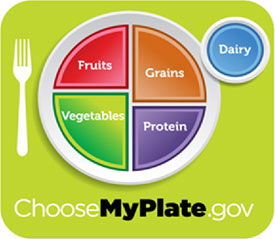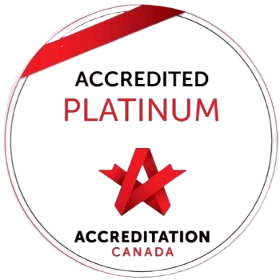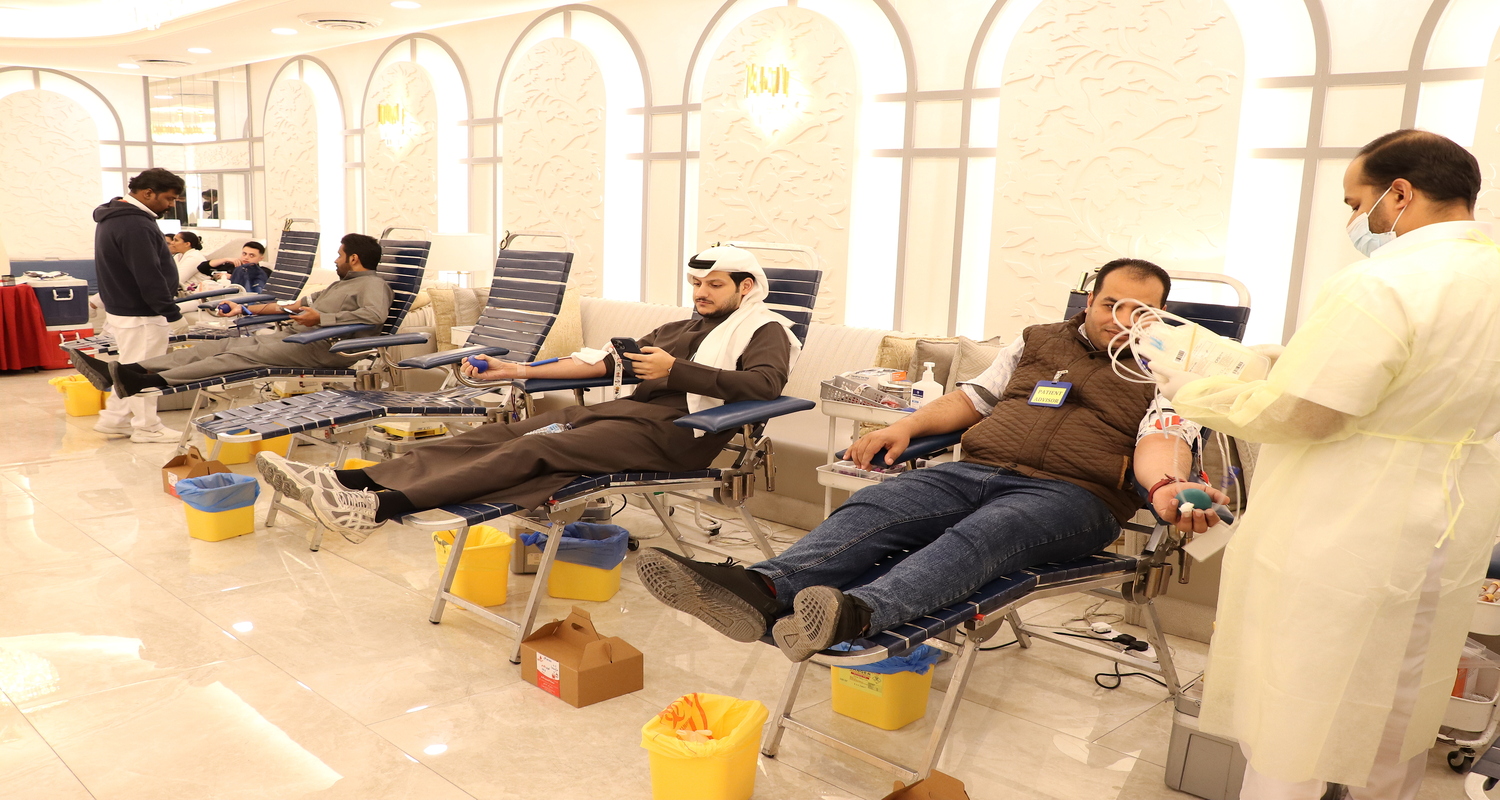MEDICAL EDUCATION Home / MEDICAL EDUCATION
Irritable Bowel Syndrome(IBS)
Irritable Bowel Syndrome(IBS) is a common disorder that affects the large intestine. It's a functional gastrointestinal (GI) disorder, meaning that the digestive system is not working as it should, but there are no visible siugns of damage or disease in the digestive tract.
Prevalence and Demographics
IBS affects an estimate 10-15% of the global population, with weome being twice as likely as men to be disgonosed. It can occur at any age, but it's most commonly disgnosed in people between the ages of 20 and 40.
Symptoms
The most common symptoms of IBS include:
- Abdominal pain or cramping
- Bloating
- Gas
- Diarrhea of constipation, or both
- Mucus in the stool
Symptoms can vary in severity and frequency, and they may come and go over time.
Causes and Contributing Factors
The exact cause of IBS is unknown, but several factors are thought to play a role, including:
- Gut-brain axis: The communication between the brain and the gut may be disrupted in the people with IBS.
- Gut Motility: The Muscle is the intestines may contact too forcefully or too weakly, leading to diarrhea or constipation.
- Gut Sensitivity: The nerves in the gut may be overly sensitive to pain and other sensations.
- Infection: A pervious infection in the gut may trigger IBS in some people.
- Stress: Stress can worsen IBS symptoms.
- Genetics: Some people may be genetically predisposed to IBS.
Diagnosis
There is no single test to diagnose IBS. Doctors typically diagnose IBS based on a person's symptoms and a physical exam. They may also order tests to rule out other conditions, such as inflammatory bowel disease or celiac disease.
Management
There is no cure for IBS, but there are treatments that can help manage symptoms. These include:
- Dietary changes: Eating a high-fiber diet, avoiding trigger foods, and drinking plenty of fluids can help improve IBS symptoms.
- Exercise: Regular exercise can help reduce stress and improve bowel function.
- Stress Management: Techniques such as yoga, meditation, and deep breathing can help manage stress.
- Medications: Medications such as laxatives, antidiarrheal, and antispasmodics may be prescribed to help relieve symptoms.
Herbal and Home Remedies
Some people with IBS find that herbal or home remedies help relieve their symptoms. However, it's important to talk to your doctor before trying any new remedies, as some can interact with medications or have other side effects.
When to seek Medical Advice
You should see you doctor if you experience any of the following symptoms:
- Rectal bleeding
- Severe abdominal pain
- Weight loss
- Fever Persistent diarrhea or constipation
These symptoms may indicate a more serious condition.
Principles of Treatment
The goal of IBS treatment is to improve quality of life by reducing symptoms and improving bowel function. Treatment is individualized and may involve a combination of dietary changes, exercise, stress management, and medication.
Conclusion
IBS is a common condition that can significantly impact a person's quality of life. However, there are effective treatments available to help manage symptoms. If you think you may have IBS, it's important to see your doctor for diagnosis and treatment.
Headaches (Questions and Answers)
How many types of headaches are there?
Headaches are divided into three major categories:
Vascular, tension and organic. all headaches fall into one of these categories, depending on their causes and symptoms.
1. Vascular
Vascular headache occurs when blood vessels in the scalp and brain expand contract to produce severe pain. Migraine and cluster headaches are the most common types.
2. Tension
Most headaches are tension headaches. They are characterized by an unrelenting, non-throbbing pain and tightness in the head, face or neck.
3. Organic
Organically caused headaches represent only 2% of all headaches. When headaches cannot be diagnosed as vascular or tension, they can be symptoms of a more serious problem, such as tumor, an infection or a disease.
Is it possible for one person to have all the three types of headaches?
The correct diagnosis is needed to begin an effective treatment plan. Early visits to your physician should be made to establish what type or classification of headaches you have. Your physician needs the history of your headache and description of the characteristics of your headache.
The history of your headache can be determined by asking:
- How old are you when the headache first started?
- How long have you been experiencing headaches?
- How often does the headache occur?
- What causes the headache, if known?
- What events are associated with the headaches?
- Who else in your family has headaches?
The clinical description of your headaches is how you feel with the headache and what happens when you get a headache.
- Where is the pain located?
- What does it feel like?
- Does an aura (changes in vision, blind spots or bright lights) accompany the headache or is there an aura before the onset of the headache?
- what other symptoms occur (weakness, nausea)?
- How long does it last?
What headache symptoms are worrisome?.
Headache can be a symptom of serious illness, such as a tumor or life-threatening infection. You seek prompt medical help if you experience:
- A sudden, new headache.
- Headaches associated with weakness, paralysis, confusion or pain in the eye or ear.
- Headache accompanied by fever, severe nausea or vomiting.
- Headache pain that awakens you at night.
- Headaches caused by exertion from sneezing, coughing or running.
High Blood Pressure
Blood pressure is the force put on the walls of the blood vessels with each heartbeat. Blood pressure helps move blood through your body.
- The first figure (120 up-the higher number) is called the systolic reading. It is the pressure in the blood vessels when the heart pumps.
- The second number is called the diastolic reading. It is the pressure in the blood vessels when the heart rests between beats.
Normal Blood pressure
Normal Blood pressure is 120 over 80or less. Blood pressure varies from person to person. Each person's Blood pressure changes from hour to hour and from day to day.
High Blood pressure
High Blood pressure is also called hypertension. High Blood pressure is 140 over 90 or higher. A diagnosis of high blood pressure is not made until your blood pressure is checked several times and it stays high.
The harder it is for blood to flow through your blood vessels, the higher your blood pressure numbers. With high blood pressure, your heart is working harder than normal. High blood pressure can lead to heart attack, stroke, kidney failure, and hardening of the blood vessels.
Signs of High Blood pressure
The only way for you to know if you have high blood pressure is to have it checked. Most people do not have any signs. Some people may have a headache or blurred visions.
Your Care
Blood pressure control is very important. If you have high blood pressure you should:
- Check your blood pressure often. Call your doctor if your blood pressure stays high.
- See your doctor as scheduled.
- Take your blood pressure medicine as ordered by your doctor.
- Take your medicine even if you feel well or your blood pressure is normal.
- Lose weight if you are overweight.
- Limit salt in your food and drinks.
- Avoid alcohol.
- Stop smoking or tobacco use.
- Exercise every day.
- Reduce stress.
- Practice relaxation daily.
Report to the hospital right away for treatment if you have:
- A severe headache.
- Vision changes.
- Chest pain, pressure or tightness.
- Have a hard time breathing or get short of breath.
- Sudden numbness, tingling or weakness in the face, arm or leg.
- Sudden confusion, trouble understanding or trouble speaking.
- Trouble swallowing.
Normal blood pressure level eating tips:
- Maintain a healthy body weight - excess body weight increase risk of developing heart disease through the elevation of lipids, blood pressure, and blood glucose levels.
- Maintain a desirable lipid profile in order to maintain a normal blood pressure.
- Bake, broil, grill, boil, roast, steam, poach, or stir fry instead of frying.
- Choose and prepare foods with little or no salt. Avoid adding salt to cooking and at the table, use herbs and spices instead such as garlic, oregano and lemon juice to add flavor to meals.
- Choose a diet high in fruits, vegetables, whole grains, low fat dairy foods and lean meats.
- Limit and reduce intake of dietary fats and sweets.
- Choose tub, spray, or liquid margarines instead of butter.
- Be physically active - regular activity improves cardiovascular risk factors.
- Avoid use of and exposure to tobacco products.
Epilepsy
What are the symptoms?
The most visible sign of epilepsy is a seizure. Seizures usually last from seconds to several minutes. There are many types of seizures Some or severe, some are subtle. People having a seizure might not be able to respond to others. They may not remember the seizure. Sometimes a seizure will be widespread, causing symptoms throughout the body.
Some of the symptoms and behaviors that can occur during a seizure include:
- Convulsions (uncontrollable muscle stiffening and shaking)
- Brief staring spells
- Repetitive, automatic behavior, such as chewing movements
- Decreased awareness of what is going on
How is epilepsy diagnosed?
Your neurologist will ask you and your family members or other observers about any seizure-like episodes you may have experienced and perform aneurologic examination.
It is likely that your neurologist will perform several tests, including:
- Electroencephalography (EEG)
- Magnetic resonance imaging (MRI) of the brain
What are the treatment options?
The most common treatment to prevent seizures is the daily use of medications. Nearly 70 percent of people with epilepsy can have good control of their seizures using medications. Many medications are available. Some of them work better for one type of epilepsy than another.
Side effects may vary from one drug to another and from one person to another. Your neurologist will make sure that the prescribed drug is the best medication for you.
In some cases when medication does not work, then surgery or vagus nerve stimulation may be an option.
Talk with your neurologist about the best treatment for your seizures.
Controlling seizures
To help control your seizures:
- Take your medication as prescribed
- Maintain regular sleep patterns
- Avoid excessive alcohol use or use of illegal drugs
- Work to reduce and manage stress
- Talk to your neurologist about changes in symptoms or new symptoms
- Exercise to maintain your overall weight
Driving and safety
People with epilepsy need to avoid driving and sports or activities that could be hazardous if they were to lose consciousness or become unable to control their movements. Working at a height should be avoided, along with swimming or bathing alone.
Women and epilepsy
Women with epilepsy should talk to their neurologist before becoming pregnant. Most pregnancies in women with epilepsy have a happy outcome and a healthy baby.
But both seizures and the drugs that treat seizures can be harmful to the developing baby. Women need to be under close medical care to make sure the epilepsy is under the best control possible.
Stroke
A stroke occurs when the brain's blood flow stops or when blood leaks into the brain tissue. The oxygen supply to a part of the brain is interrupted by a stroke, causing brain cells in that area to die. This means that some parts of the body may not be able to function. Risk Factor
There are a number of risk factors that increase the chances of having a stroke. Some risk factors cannot be reversed or changed. Some others you can get rid of it or you can control them.
Risk Factor you cannot change
- Age. For every 10 years of your life, your risk having a stroke increases.
- Gender. Men have 2 times more risk for stroke than women have.
- Past stroke or Transient Ischemic Attack.
- Family history of stroke or heart attack.
Risk Factor you can control
You can lower your risk of stroke when you cut out or reduce these risk factors:
- Smoking.
- High blood pressure.
- High cholesterol.
- Heart disease.
- Diabetes.
- Obesity.
- Lack of physical activity.
- Alcohol, coffee, and drug use.
Warning signs for stroke
When a person is about to have a stroke, there are warning signs. Some of the signs are physical, and other signs are mental.
- Numbness, weakness of the face, arm, or leg (on one or both sides of the body).
- Vision that suddenly blurs or decreases (in one or both eyes).
- Trouble speaking or understanding.
- Dizziness, loss of balance, or an unexplained fall.
- Difficulty swallowing.
- Sudden, severe headache that is unexplained.
- Sudden confusion.
When you spot the warning signs and take action, you maybe able to prevent a stroke. If a stroke occurs, taking action may mean that the damage is less severe.
Act fast! When you or someone you know has one or more warning signs of stroke, take action immediately. Call ambulance service. Contact your doctor right away so proper measures can be taken quickly.
Fasting Guidelines for Diabetics During Ramadan
- It is important to consult your physician before you begin to fast during Ramadan. He will help you to control your blood sugar and to avoid complications.
- There is more than one type of diabetics. Some need only diet to control blood sugar, while others might need to take pills or insulin in addition to their special diet.
- Patients on insulin need to check with their physician before fasting. Generally, these type of patients are not advised to fast in order to avoid high or low blood sugar, which may cause coma.
- Children and young patients with diabetes depend on daily insulin injections to control the blood sugar.
- Insulin doses and timing are scheduled to match the timing of your meals.
- Patients who are diet controlled need to speak to their physician before fasting. If the physician allows the fasting, please consider the following:
- The same calorie and meal plans should be divided into two meals (evening) Iftar or early morning (Sahoor).
- A snack maybe given at midnight (within the same calorie level).
- The Iftar meal should be taken at night after sunset (not to be delayed) to avoid low blood sugar). Patients may exercise (walking) 1-2 hours after the Iftar meal for 30 minutes with the physician's approval.
- Fasting diabetics who are on pills or insulin are advised to avoid exercises during day time specially in the afternoon (to avoid low blood sugar). Patients may exercise (walking) 1-2 hours after the Iftar meal for 30 minutes with the physician's approval.
- Diabetics on oral pills who used to take them one a day (long acting) are advised to see their physician. He may change the pills to different kind (short acting/intermediate). Long acting pills are not advised to be taken with Sahoor meal.
- The same diet should be followed.
- Diabetics on pills who take them twice a day are advised to see their physician. He may change the timing of the pills.
- With your physician's approval, you are advised to have one tablet at iftar and just half at Sahoor to avoid low blood sugar in the afternoon or day time.
- Pregnant Diabetics and Gestational diabetics are advised not to fast to avoid low blood sugar, ketosis and other health problems which might be dangerous and may put the diabetic mother and her baby at risk.
- It is very important blood sugar before meals and to record the results and show them to your physician.
- Diabetics in Ramadan are advised to follow the same dietary guidelines as before Ramadan, carry their Diabetic ID cards and some sugar cubes to be used in case of hypoglycemia (low blood sugar). Some symptoms of hypoglycemia are: tiredness, weakness, dizziness, shaking, headache, sweat, feeling cold, blurred vision. In case of hypoglycemia, patients are advised to discontinue fasting.
- Eat a small amount of food at Iftar (in the evening); two meals (Iftar and Sahoor) and one snack are better than two large meals.
- With the physician's approval, patients on diuretics are advised to take them after Iftar rather than after Sahoor to avoid dehydration and thirst during the daytime.
- Please check with your physician before making any changes in your medication or diet.
Sample Menu for Fasting Diabetic Patients
Iftar (Evening) Meal:
- Soup
- Meat or chicken without skin, fish or shrimp
- Hareese or rice or macaroni or Arab whole wheat bread
- Green salad
- Cooked vegetables
- Fruit (3 dates only)
- Low fat milk or yogurt or low fat Laban (buttermilk)
Snack:
- Fruit or unsweetened fruit juice
- Vegetable/salad
- Low fat milk or yogurt or low fat Laban (buttermilk)
Sahoor (as close to sunrise as permitted) Meal:
- Soup
- Meat or chicken without skin, fish or shrimp or low fat cheese or peanut butter or cooked lentils
- Green salad
- Cooked vegetables
- Fruit or unsweetened fruit juice
- Low fat milk or yogurt or low fat Laban (buttermilk)
- Whole wheat Arab bread or rice or macaroni
NOTE:
- 1 cup hareese may replace 1 cup of rice. The allowed serving of meat maybe cooked with hareese
- 3 dates equal to one fresh fruit or ½ cup unsweetened fruit juice
- 3 pieces of samboosa may replace the serving of meat and bread
- Consult your dietitian to discuss your meal plan during Ramadan
My Plate Guidelines
 The My Plate Guidelines, developed in 2011, are the revised healthy eating guidelines developed by the USDA for healthy diet habits! The new food guidelines promise to end nutrition confusion and are greatly simplified. The food pyramid is gone. Now we find a plate called "Choose My Plate". It is a visual representation of what your actual plate with food should look like. You can quickly look and see if you are eating correctly, or if those grains are out of control again!
The My Plate Guidelines, developed in 2011, are the revised healthy eating guidelines developed by the USDA for healthy diet habits! The new food guidelines promise to end nutrition confusion and are greatly simplified. The food pyramid is gone. Now we find a plate called "Choose My Plate". It is a visual representation of what your actual plate with food should look like. You can quickly look and see if you are eating correctly, or if those grains are out of control again!
Your plate has room for 5 food groups, & the My Plate Guidelines are:
Fruits: Any fruits are recommended or 100% fruit juice. Fruit can be fresh, canned frozen, or dried and can be whole, cut up or pureed. The amount of fruits that you need is determined by your age but women should eat 1.5 cups per day and men 2 cups per day.
Vegetables: Any vegetable or 100% veggie juice counts. Vegetables can be raw, cooked, frozen, canned, dried and can be whole, cut up or mashed. The total amount of veggies is also determined by age but women should get 2 cups and men 3 cups per day.
Grains: Any food made from wheat, rice, oats, cornmeal, barley or another cereal grain is a grain product. Bread, pasta, oatmeal, breakfast cereals, tortillas, and grits are examples of grains. Grain guidelines vary between 3 to 8 oz equivalents depending on your age and sex and half of them should be whole grain.
Protein Foods: All foods made from meat, poultry, seafood, beans and peas, eggs, processed soy products, nuts and seeds. Eat a variety of these foods and at least 8 oz. of seafood per week. Choose lean protein.
Dairy: All fluid milk products and choose fat-free or low-fat or calcium fortified soy milk. Also included are puddings, ice cream, frozen yogurt, cheeses, and yogurt. Boys, girls, women, and men need 3 cups of milk per day.
Oils: Oils are not included in the food guidelines but they have essential nutrients and are included in the USDA patterns. They recommend eating healthy oils and most people eat more than enough in their diet. Good choices are salad dressings, nuts, fish, and cooking oils! The average adult should eat between 5 to 7 teaspoons of oil, which is not much!
Empty Calories: Foods and drinks that contain extra calories from fats or sugar, but few or no nutrients. The average person should only allow a small amount per day!
The rules that the My Plate Guidelines encourage are:
BALANCING CALORIES:
- Enjoy your food, but eat less.
- Avoid oversized portions.
FOODS TO INCREASE:
- Make half of your plate fruits & vegetables.
- Make at least half your grains whole grains.
- Switch to fat-free or low-fat (1%) milk
FOODS TO REDUCE:
- Compare sodium in foods like soup, bread, and frozen meals - and choose the foods with lower numbers.
- Drink water instead of sugary drinks.
The My Plate Guidelines are a step in the right direction if you are trying to make lifestyle solutions and incorporate more healthy foods. I thought that it was interesting that sweets, oils and foods that are empty calories were not included at all on the plate. A small amount of empty calories is okay, but most people eat far more than is healthy was their advice!






























